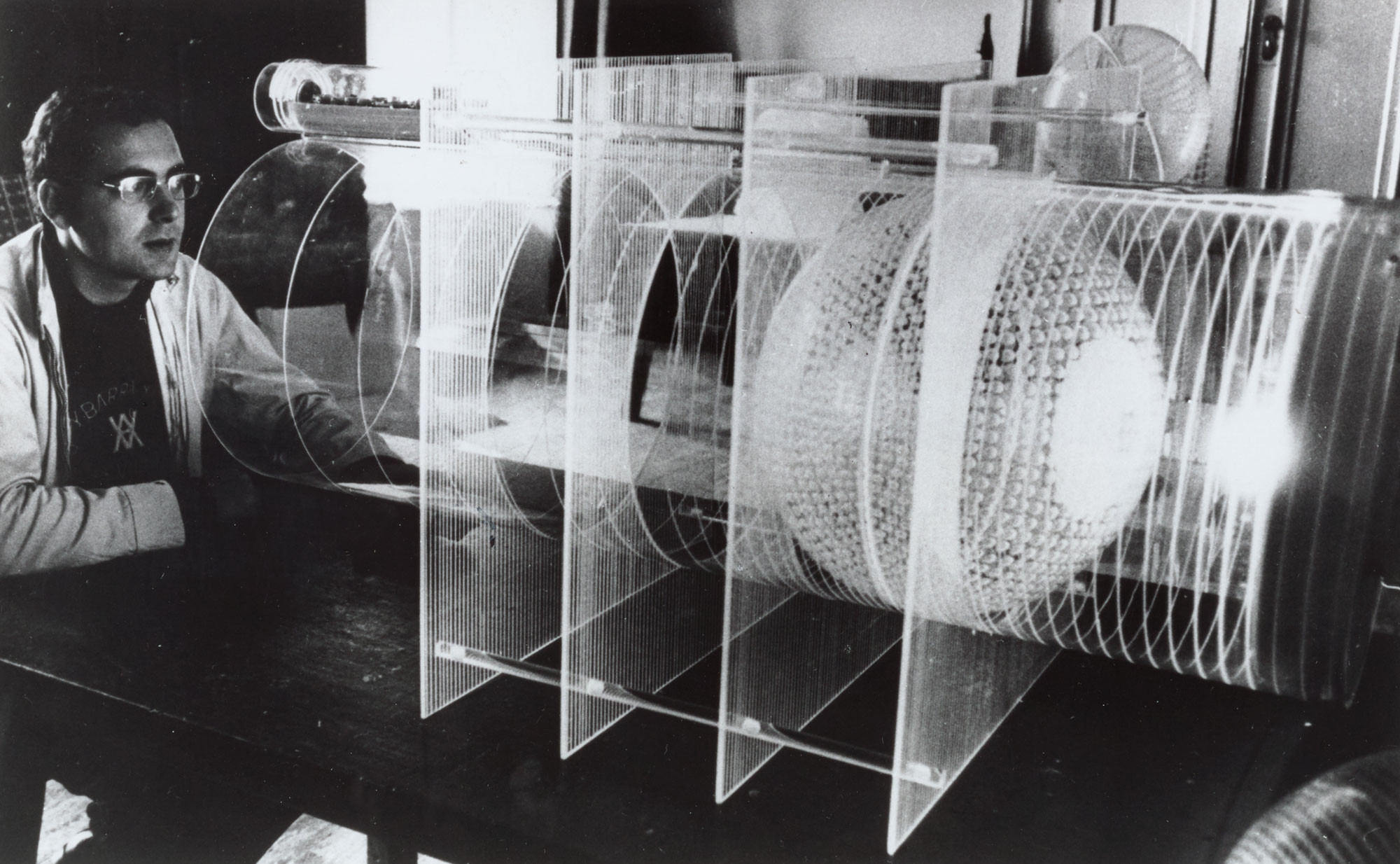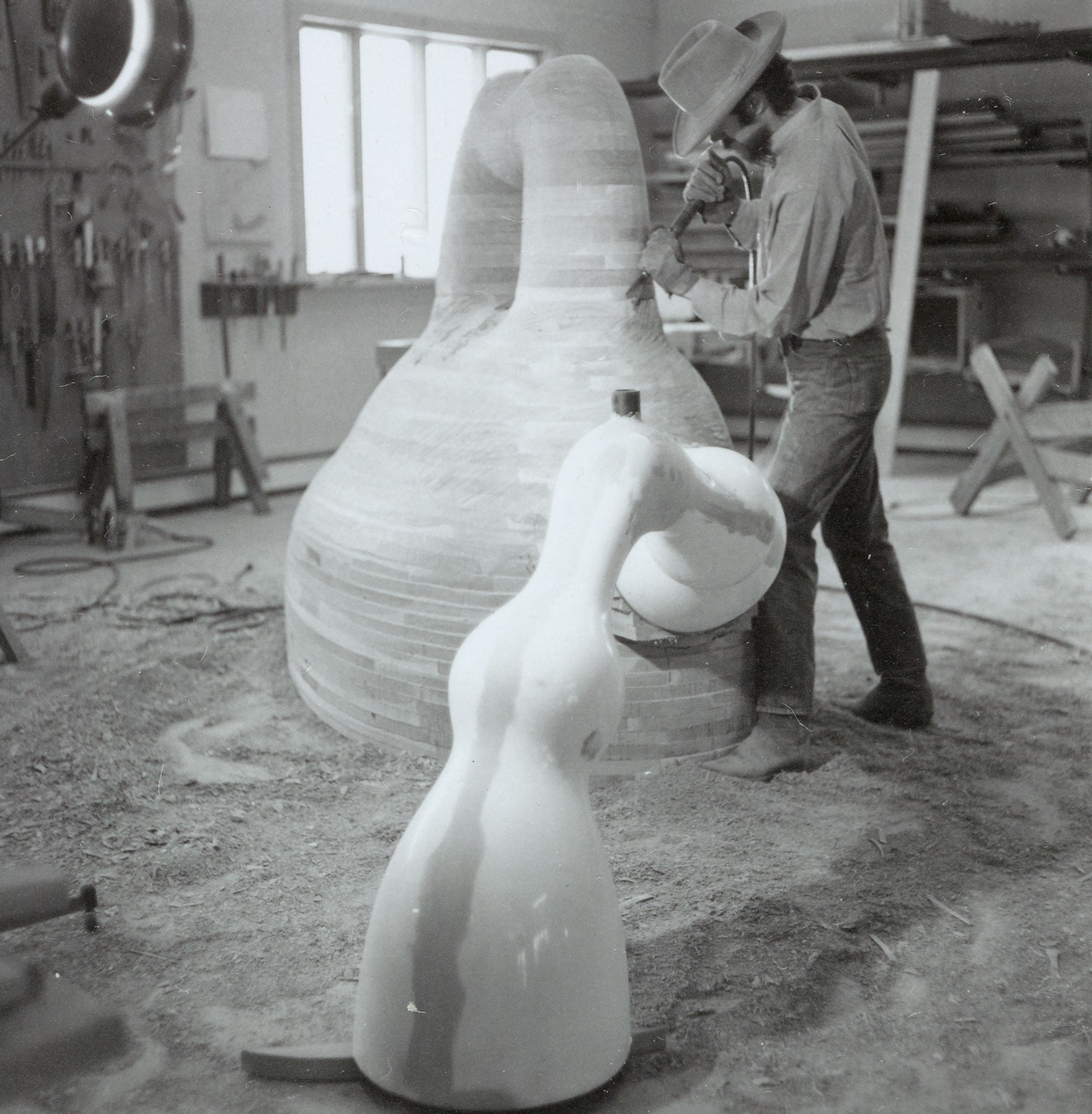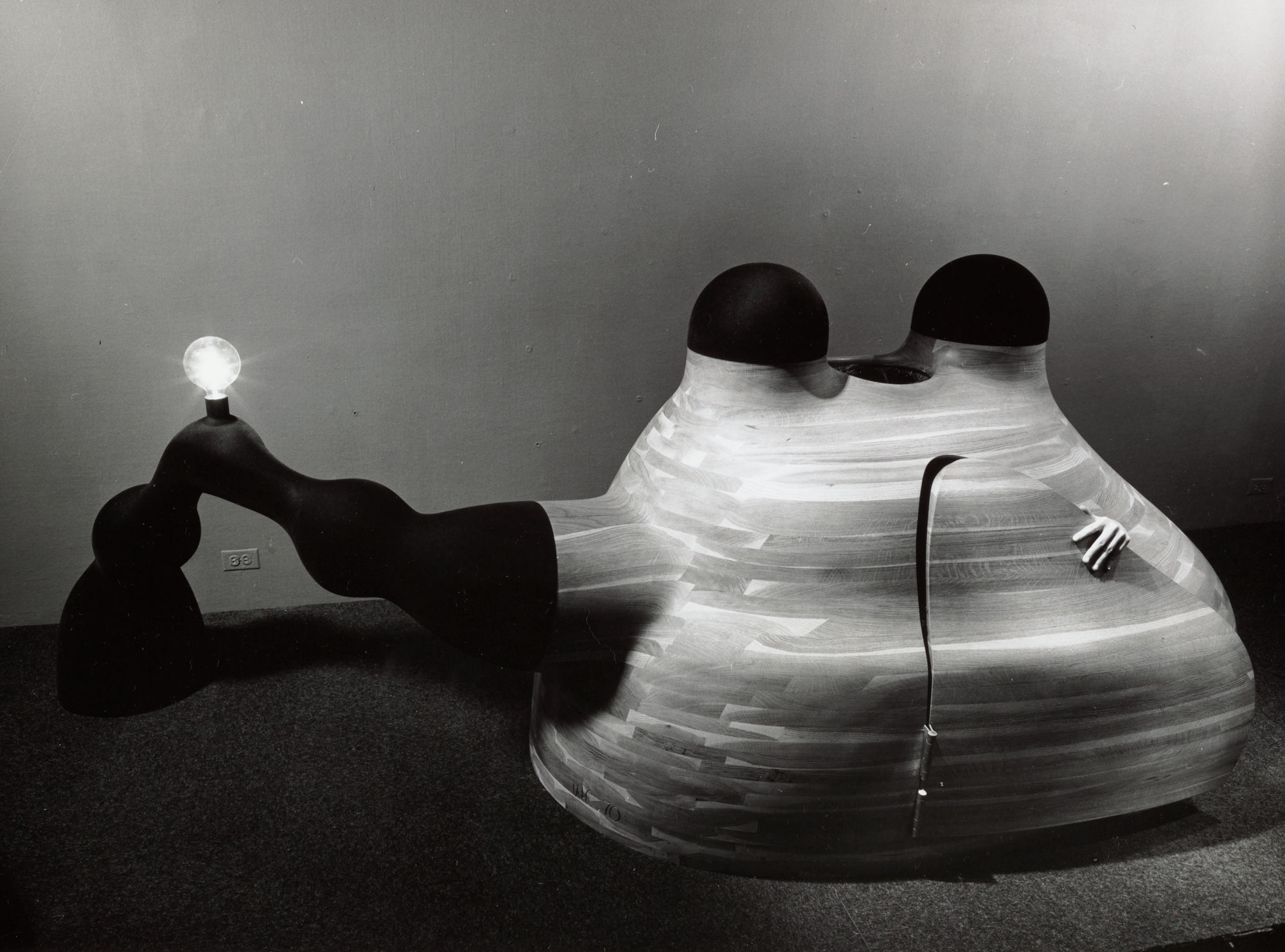From the Archives: "Contemplation Environments"
Containers designed for reflection strike a new chord during our current health crisis.
↑ Fiber artist Ted Hallman's shaggy Centering Environment offers an ideal shelter for meditation.
Photo: American Craft Council Archives
The concept of isolation looms large in our society today as we are faced with a public health crisis that demands we practice social distancing and has resulted in the closure of many public spaces. Our homes have become sanctuaries from the threat of serious illness. We do our best to make our spaces conducive to work, school, recreation, creativity, and relaxation all at once. Even as we isolate from our neighbors, we may find it a tremendous challenge to carve out a quiet space for solitude and tranquility.
In 1970, people were increasingly likely to be living in larger urban environments with little access to nature or private spaces conducive to meditation and reflection. At that time, the Museum of Contemporary Crafts presented the exhibition “Contemplation Environments,” which explored the way physical surroundings serve to provide a peaceful space that can influence a contemplative response. Paul J. Smith, director of the museum, wrote “today we live in over-crowded, noisy, dehumanized communities where there are few places ideal for contemplation. As a result there is a growing need among people for places of solitude.”
A unique aspect of this particular exhibition is that it was “developed and not collected,” according to Smith. The works presented in “Contemplation Environments” were primarily conceptual ideas that artists had researched and explored but had not yet constructed. Architect Gamal El-Zoghby worked with the artists to bring their concepts to fruition. In order to best maintain the environments’ contemplative character, the hours and admission process were adjusted to limit the numbers of attendees such that each environment could be experienced individually.
The environments ranged from highly tactile to highly technological. John Fischer’s Turf Room consisted of a chamber covered in fresh turf, said to induce “security through prior conditioning.” In contrast, Ugo La Pietra created a plastic tubular construction that produced both light and sound.

↑ A plastic, optical structure that produces both light and sound by Ugo La Pietra.
Photo: ACC Archives
Several future American Craft Council award recipients were a part of the exhibition. 1997 gold medalist Wendell Castle’s Enclosed Reclining Environment for One featured a bucket seat, shag carpet-covered interior, and an exterior light indicating occupancy. The complex geometric weaving on the outer covering of 1988 ACC fellow Ted Hallman’s Centering Environment contrasted with the shaggy free form interior covering, and the above image suggests an ideal environment for meditation.
More information on "Contemplation Environments" can be found here. Visit the digital collections of the ACC library to view other exhibitions of the Museum of Contemporary Crafts.
The American Craft Council Library exists thanks to our members
As a national nonprofit, we could not provide this rich craft resource of more than 20,000 books and exhibition catalogues, 3,000 individual artist files, 100 periodicals, and more without the backing of a community who believe that making makes our lives better. With your support, we can keep our collections open to the public and available online.
Become an ACC member Give a supporting gift







